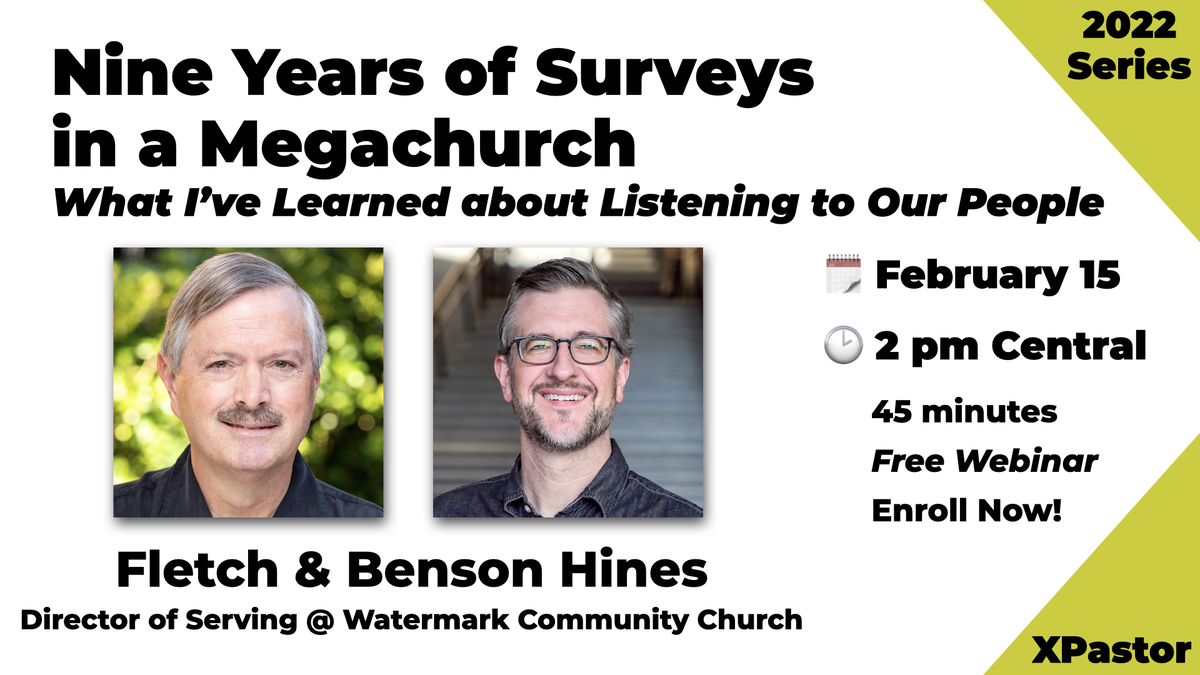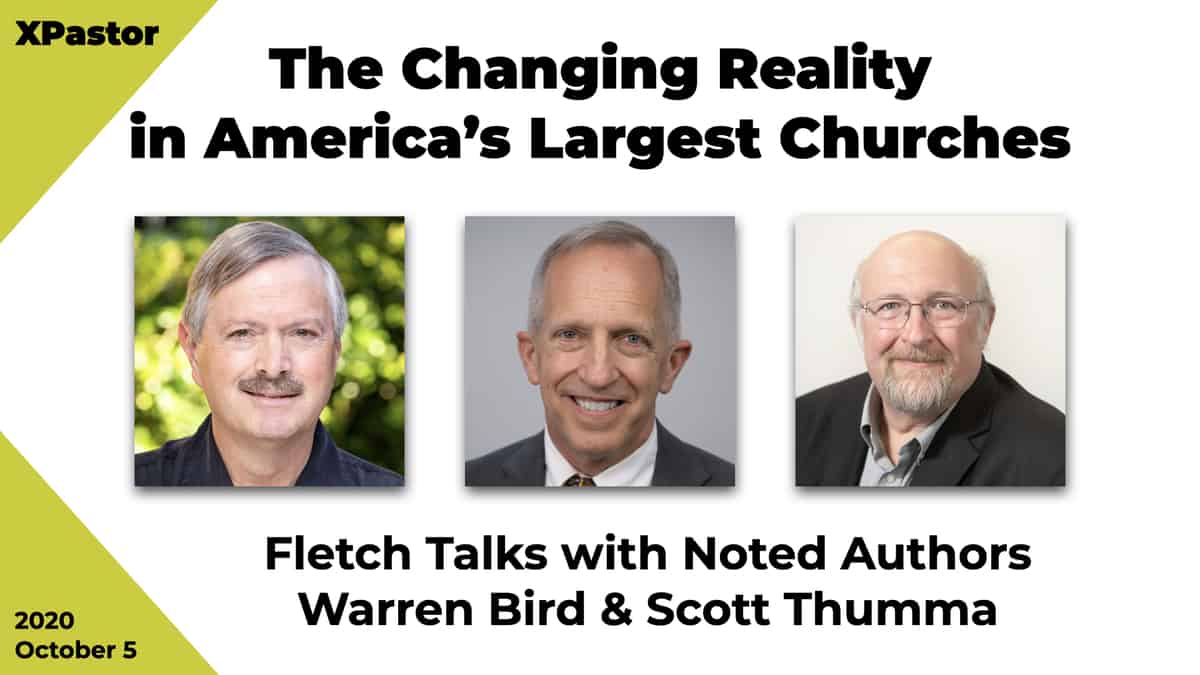Unfortunately, I am old enough to reminisce about the original “Adventures of Superman” created in the 1950s. But proudly, I am young enough to have only viewed them as reruns in the 1960s! It may seem odd, but I attribute some of my sense of “truth, justice and the American Way” to Superman. Indeed, it was a simpler time back then. It didn’t take much to capture the imagination of the American public—just a man who possessed otherworldly powers to do what needed to be done. No matter what evil came along, Superman was up to the task of making everything right again. Now that’s power!
However—there was kryptonite! We can’t forget about the fictional material that emits a peculiar radiation that drains Superman of his power.
Fun fact—22 forms of kryptonite were used to render Superman powerless in various ways over the life of the series!
When God blesses a leader with a clear and compelling vision, they have been given a kind of power that allows for some amazing things to happen in and through the local church. We don’t see leaders “leaping tall buildings with a single bound,” but we can see them communicating and executing a great and powerful God-given vision.
The early pioneers of the “Multisite Movement” were given a powerful vision. After almost four decades of innovating and executing this strategy, multisite has proven to be an effective tool for stimulating growth in the church. But as it seems, all powers have kryptonite.
When a growing church has a clear and relentless vision of reaching a given community or region with a multisite strategy, it will face challenges, or kryptonite, if you will. This white paper outlines one of them—managing place and space.
“How do we keep adding new campuses in new communities?” Somehow, church leaders “miraculously” discover/create ways to beat the barriers and to thrive even more! Typical place and space challenges faced by multisite churches are illustrated here through the experience of LibertyLive.Church in Hampton, Virginia. Extraordinary expense and timing issues associated with providing facilities for multisite campuses can easily threaten momentum.
A Real Threat To Derail Multisite Momentum
A growing number of churches are fully executing multisite as a part of their multiplication strategy for reaching new people in new communities. While the development of the multisite model has created a new solution, it also sets up an additional dilemma. This new dilemma could either slow progress or thwart the strategy altogether. Sustaining momentum of launching additional campuses after the initial 2-3 sites proves to be significantly more difficult because of growing complexities in three specific areas:
- Developing & accepting a culture of consistent change in organizational structure
- Adding new physical location(s)/facilities
- Cost of launching additional sites
The necessity for new facilities in new communities presents new issues that could be crippling to momentum. The speed of raising resources, developing sites, perceived inefficiencies, and perceived ineffectiveness becomes a threat to the rhythm of growth established since initially embracing a multisite strategy.
Threats To LibertyLive.Church’s Vision
2008-09
LibertyLive.Church in Hampton, Virginia has been significantly blessed.
In 2008, it expanded seating capacity by delivering the sermon via video to members seated in the church gym. This experience taught LibertyLive that what could be done across the hall, could also be done in communities throughout Hampton Roads. A year later, the 100+ year multigenerational and multiethnic church, led by a new visionary pastor, began exploring what it would look like “to reach the entirety of Hampton Roads.” Soon LibertyLive began to grow with this vision in mind.
2011
LibertyLive expanded capacity again with the construction of a 3,000-seat worship center. In the middle of all this activity, the leadership team became students of multisiting—a growing method of reaching more people in a region. They were keenly aware not everyone in Hampton Roads would drive to the Hampton Campus location. LibertyLive desired to launch campuses in communities where its members and guests live in order to welcome even more neighbors. Practically speaking, this meant LibertyLive’s vision was ten campuses by 2026.
2013
LibertyLive.Church leased a commercial property in the Harborview/Suffolk area and outfitted it to accommodate 550 seats for the gospel. After sending 250-300 members/attenders, the campus quickly grew to regular weekend attendance of 700-750 at the new location.
2015
LibertyLive.Church was compelled to lease a new flex space and built it out to include 825 seats. Having commissioned and sent another 172 members/attenders to worship at the new space, it grew to an average of 600-700 people after its first year. Regular attendance is now 1100+ each weekend.
2017
LibertyLive.Church was blessed with an opportunity to merge with another church in the York River area. A building was gifted to them as part of the two congregations coming together. An investment was made to renovate, and the subsequent build-out provided an additional 300 seats. The new location launched with 230+ people between the existing members from the seed congregation and those from Liberty. Less than two years later, the York River Campus proudly welcomes 525+ each week.
2018
Even with four campuses comprising almost 4,700 seats and average weekend attendance of 6,400+, more needed to be done to open new seats to the Hampton Roads region for hearers of The Gospel.
Thoughts
Growing comfortable with a culture of organizational adjustments, the Liberty leadership team came face-to-face with the challenges of their vision. Three new threats (two real and one perceived) to LibertyLive’s well-established rhythms and processes became factors that increasingly hindered growth.
The first two speedbumps were finances and time. Knowing what it took to establish four permanent 24/7 campuses, forecasting six more was easy. Considering the outcome LibertyLive wanted and the current pace at which it was expanding, there wasn’t going to be enough of either resource to reach the goal of ten campuses by 2026.
Unfortunately, the church’s method of buying and maintaining facilities was cost-prohibitive. Raising funds, developing a new venue and launching a campus was a slow process.
Additionally, LibertyLive had an expectation of doing all things with excellence, thus creating the third speed-bump. As insufficient resources threatened the vision, would the church have to accept a hit to its high standards?
Launching Campuses Would Slow or Change
As it turned out, the kryptonite was not enough to deter LibertyLive from such a clear and compelling vision. However, the situation forced the church to innovate and trust God to provide a new solution so it could continue building physical capacity for the gospel, forever impacting the Hampton Roads region.
The Church Has A History Of Innovating
Churches adopt a multisite strategy for a variety of reasons. Oftentimes, multisites are established to serve as a space or reach solution. A methodology replacing the large regional church and the burdensome expenses associated with it is adding seats in surrounding neighborhoods.
Churches that end up as a multisite typically start with one prime time service becoming overcrowded. The next step in the progression to multisiting is adding services in order to experiment with new times, or even different days. Next, churches typically create additional venues on its main site, typically taking advantage of fellowship halls, gymnasiums and other common areas within the facility.
Once a church runs out of usable space and effective alternate service times, leadership must decide to go forward using one of the following options:
- Consider doing nothing new, essentially capping growth.
- Expand current facility; incur expense of remodeling, maintenance and increased resources going forward.
- Sell the current facility, buy land and start over (this time bigger). Rinse and repeat!
- Start a program of planting new, independent churches; send significant numbers of members “on mission” to nearby communities.
- Multisite! Become one church in multiple locations.
Considering the five common “place and space” options for launching new campuses, a church needs to find a balanced portfolio of properties that can be sustainable for the longevity of the vision.
The multisite strategy is increasingly employed as a sensible growth strategy to create capacity in a sustainable, scalable way. Nearly four decades of multisiting innovation has shown there are generally five ways to launch a multisite campus. The facility solutions are displayed below on a spectrum of money and time efficiency. The options range from relatively fast with comparatively minimal expenses to slow and very expensive.
Ways To Launch A Multisite Campus
- Use rented facilities and do church portably
- Merge with an existing church
- Lease an existing commercial/retail space; build out as needed
- Buy an existing commercial/retail space; build out as needed
- Buy land and build a new facility for each site
At any given time during the multisite journey, a church may have an expression of any and all these facility types in use.
The diversified approach helps a church balance the urgency of the gospel imperative with availability of capital, cashflow and other resources.
However, even in the middle of a vision coming to life, vision-killers can destroy momentum in a heartbeat. Untoward financial stress on a strategy, even a strategy advancing a clear and compelling vision with growing momentum, can thwart the very best plans. Jim Tomberlin, Founder and CEO of Multisite Solutions, says most churches that adopt the multisite strategy never get past three campuses. Cost and complexity are two reasons for terminating what was once a bigger vision.
A Solution To Multisite Momentum Killers
Over the course of four decades, the multisiting strategy has been innovated extensively, becoming quite sophisticated. So how do churches overcome the cost of growth and figure out how to “Go” faster and cheaper…with excellence?
As LibertyLive.Church’s multisite journey hummed along, the church found itself in a new place. It had to factor in increasing costs (particularly facility costs), as well as the timing needed to develop the right properties. LibertyLive had to consider new options—one of which was doing church portably in a rented facility. It was easy to understand how this route would be cheaper and faster, but LibertyLive questioned whether portable church could be done efficiently, effectively, and most importantly, with excellence.
LibertyLive.Church was uneasy about the idea of pursuing a portable church strategy until they learned these four truths of portability:
- Portability is cheaper.
- Portability is faster.
- Portability can be done with excellence.
- Portability provides bonus benefits.
1. How Is a Portable Setting Cheaper?
Given the common facility options multisite churches have used and developed over the course of more than 30 years, doing church in a portable setting is by far the least expensive in terms of entry capital and cashflow.
Buying land and building, or purchasing/leasing a commercial site requires
a minimum seven-figure capital outlay once you figure in the cost of the purchase/lease and what will be required to outfit the space for ministry (AVL gear, equipment, furnishings, etc.). This total does not include the expense of regular and ongoing maintenance for the facility.
Entry into a portable environment is relatively inexpensive, given the fact rental fees in most markets are much lower when compared to other options for acquiring a space within the same market. The only capital required is the cost of setting up to do church well in a portable environment. This is likely a low six-figure number, and it is a one-time expense.
In this financial scenario, portable churches that start with good momentum and continue to grow quickly become debt-free, experiencing break-even cashflow within 6-18 months.
2. How Is a Portable Setting Faster?
The “speed” of doing church in a portable environment speaks to three distinct elements:
- Launch Speed—The speed in which a church can enter ministry from the time the decision is made to launch a new campus.
- Community Engagement Speed—The speed in which the church, specifically the launch teams, can engage with members of the community
- Load-In Speed—The speed in which a team of volunteers can pull up to a facility and prepare it for a great worship experience.
There is usually an abundance of neighboring communities with several types of facilities to rent. Additionally, the capital investment is relatively less expensive. Because of these factors, a church’s launch speed could happen in as few as three months. Comparatively speaking, other multisite options most frequently will demand an exponentially longer lead time.
The top facilities to rent for portable campuses—schools, YMCA/community centers and theaters—come with built-in communities of employees and their family members who can be ministered to. Other local persons frequent these venues daily as well. These groups of people provide a low mental threshold for entry into engagement with a church launch.
A team equipped for success, meaning it has been given the right gear, the right system and the right training, can be set loose to do amazing things. If a church honors its volunteer team and provides these necessities, load-in can happen in 30-90 minutes, while load-out typically happens in under an hour.
3. What Does Excellence Look Like?
If you put five lead pastors, five executive pastors, five production directors, and five children’s pastors in a room, you would likely get 20 different descriptions of an excellent worship environment. The solution to truly creating an excellent portable worship environment requires the discovery of a sweet spot, where all of their best opinions come together. If no one area took priority over the others, each church would have its own definition of what excellence looks like.
Ultimately:
X + X + X + X + X = Excellence.
Each X is owned by the church as a “piece of excellence.”
For LibertyLive.Church, excellence had been established while there was just one facility, meaning those who attend the church have set expectations for what they will experience and learn with each exposure. Those who served in ministry clearly understand what those expectations are and plan accordingly in order to meet those expectations. The fact that each of their new campuses were in permanent sites allowed controls to be used to maintain the desired level of excellence as each campus was added. The need to go portable forced the question, “Can we do church portably with the level of excellence we are used to?”
A portable church environment is worthy of being called excellent if it exceeds expectations for both those attending and serving. Elements considered in this equation would include (but not be limited to):
- Production Levels
- Quality of Childcare
- Level of Hospitality
- Wayfinding From Street To Seat
- Load In/Out Time
- Load In/Out Level Of Ease
- Cleanliness
- Attractiveness
- Quality Of Gear
A church operates with excellence when the WHOLE portable system is inviting, effective and efficient. Without a doubt, portability can be done well or very poorly, revealing the compelling nature of a multiplication vision. LibertyLive found a way to take advantage of the positive economies of being portable and still capture the level of excellence to which it had grown accustomed.
4. Ten Bonus Benefits
There are a significant number of benefits a church experiences while in a portable environment. Whether a church enters into portability with or without an exit strategy toward its next gathering space, it will experience great fruit and significant learnings to grow strong and deep roots in the community:
- New ministry with no debt—as established, of all the facility options, portability has the lowest capital investment entry requirement and cashflow expense.It also has low ongoing expense.
- Inherent flexibility within the facility and community—Usually, more and different space can be developed within a portable facility. Subsequently, alternate rentable facilities are usually available within the community, offering various space dynamics.
- Opportunity to set new expectations—The portable church environment allows church leaders to reframe one’s view of “church.” This typically applies to new attenders, especially those who are irreligious or “re-churching.” Engagement in community and growing deeper with a biblical world view can be newly modeled and expected as the church continues to grow.
- Early/exponential growth—Portable church lends itself to members feeling as though they are part of a “movement.” Everyone is “on mission.” Permanent walls create a sense of being settled and relaxed about mission, increasing the challenge of leaders trying to mobilize the church.
- Allows for “soft failures” vs. “hard/permanent failures”—Common reasons a portable church launch eventually fails are:
-
- Lack of clarity in terms of vision
- Underestimating the work involved in building momentum
- Chaotic on-site delivery
- Not setting volunteers up for success
- Settling for an “it’ll do” attitude, which typically looks like underfunding the portable campus.
- High volunteer commitment—Portable churches have volunteers with more “buy-in” to the church’s mission/vision. Being deeply integrated into teams fosters great community and allows members to feel needed in fulfilling the vision of the launch. You will get volunteers who don’t typically have a “fit” in brick and mortar to serve in “portable” roles.
- Deepening the development of people—This begins with a deep sense of community, widening the entry to leadership pipeline, and developing new homegrown leaders who know and live the established culture of the community.
- Low/no significant thresholds to overcome—People comfortably and frequently visit local schools, YMCA’s, movie theaters and community buildings.
- A much-needed solution—Your portable campus can become a desperately- needed solution in a community. A church needs to be focused on the community. Thom Rainer shares the following in What Does a Community-Focused Church Look Like: ”Since the church is not the building but the people, lasting impact and engagement should not be dependent on brick and mortar. Very few people will say they became engaged with a church because of the facility. And while a building can be a powerful branding tool, it is an expensive one!”
- Insider perspective vs. outsider guessing—A season of portability helps determine the dynamics of a church’s next step. When the vantage point is from within a community a church is ministering to, it has the significant advantage of understanding exactly where it should land in terms of a 24/7 facility. Educated guesses can be done from surrounding communities or regions, but better decisions can be made from within the neighborhood.
Portability allows a church to extend its reach into a new community, while growing and transforming for the better—all within an affordable environment.
A portable church can help root a well-thought-out ministry model, grow and strengthen finances, establish ways for people to experience biblical community, build momentum in attendance, and form a strong leadership base.
What Are We To Conclude?
Nathan Artt, Principal of Ministry Solutions, says this about churches considering how and when to move from one phase (facility) to another:
If we look at everything through the lens of cost against capacity, and maintaining the highest need, which is flexibility, it would often seem to make more sense for a church to have two or three temporary locations, build up the critical mass of givers, servers, and staff, before spending millions or hundreds of thousands of dollars on either a permanent or semi-permanent location.
Some churches embrace portability, fully realizing these benefits with no exit strategy in mind. Others enjoy these benefits while being very mindful of their next gathering space—usually something that provides a 24/7 presence. The art of managing that type of portable strategy is knowing if and when to pull the trigger and launch into the next space. Most church leaders agree a permanent meeting space is preferred because it establishes a long-standing, visible brand presence in a community. Great influence can be generated out of a permanent campus. However, a positive and mindful experience of portability within a new community can help church leaders make smarter and better-informed decisions about the next step.
Generally, moving prematurely from a portable to permanent space presents new limiting factors of growth that need to be considered. It is tragic to hear a church leader share about how they “pulled the trigger to permanence” too quickly and landed in a space that was all wrong, with underdeveloped momentum, and an underdeveloped volunteer base. Potential new and challenging issues become:
-
- Limited capacity
- Wrong design
- Wrong location
- New burden of debt
Then again, these are not really new, are they?
Case Study
At four campuses, LibertyLive.Church felt the momentum of a clear vision, yet faced the stalling effect due to the cost of additional campuses. However, the church did not feel released from its vision because speed-bumps were in the way. Adjusting its strategy to include portability, LibertyLive was able to launch more campuses without accumulating debt. LibertyLive’s new campuses provided opportunities to reach the rest of the Hampton Roads region with the level of excellence to which the church had grown accustomed. LibertyLive.Church’s Smithfield Campus launched in a high school in January 2019 with great success. The location sees an average weekend attendance of 800+! Campuses six, seven and eight are now clearly visible on the horizon!
A powerful vision for a church to reach a community, area or region is both a gift and a responsibility. Churches that utilize a multisite strategy can sustain momentum by integrating one or more portability environments into its facilities mix.
The Bottom Line
Campuses in portable environments allow a church to multiply with no debt, while growing the brand for which the church is known. They can be a quick, low-cost entry into a new community and provide an excellent worship experience, packed with benefits that will increase momentum of the multiplication movement.
Extra Credit
Check out what the options above look like for a church wanting to open 300 new seats in a new campus, and read more about each of the ways to launch a multisite:
- Facility Cost Comparison Matrix by Cool Solutions Group, Multisite Solutions and Portable Church®
- To Build, Buy, Lease or Rent…That is the Question by Tim Cool, Cool Solutions Group
- Consider in Your Community by Portable Church®
- 16 Ways Multisite Churches Fail by Jim Tomberlin
- Latest Multisite Trends by Warren Bird, Leadership Network
- 5 Reasons to Start a New Church or Campus by Leadership Network and Portable Church®
- Intelligent Church Real Estate by Nathan Artt. In this must-read resource for church leaders engaged in multisite growth, Artt addresses the need for a well-thought-out financial strategy that precedes a clear facility strategy. He shares: “Creating successful expansion projects, whether through multisite growth, expansion, or relocation, has nothing to do with a building. It has everything to do with how you create enough ministry capacity to meet an existing, not future, demand at a price point where the capacity you are creating pays for itself.”











